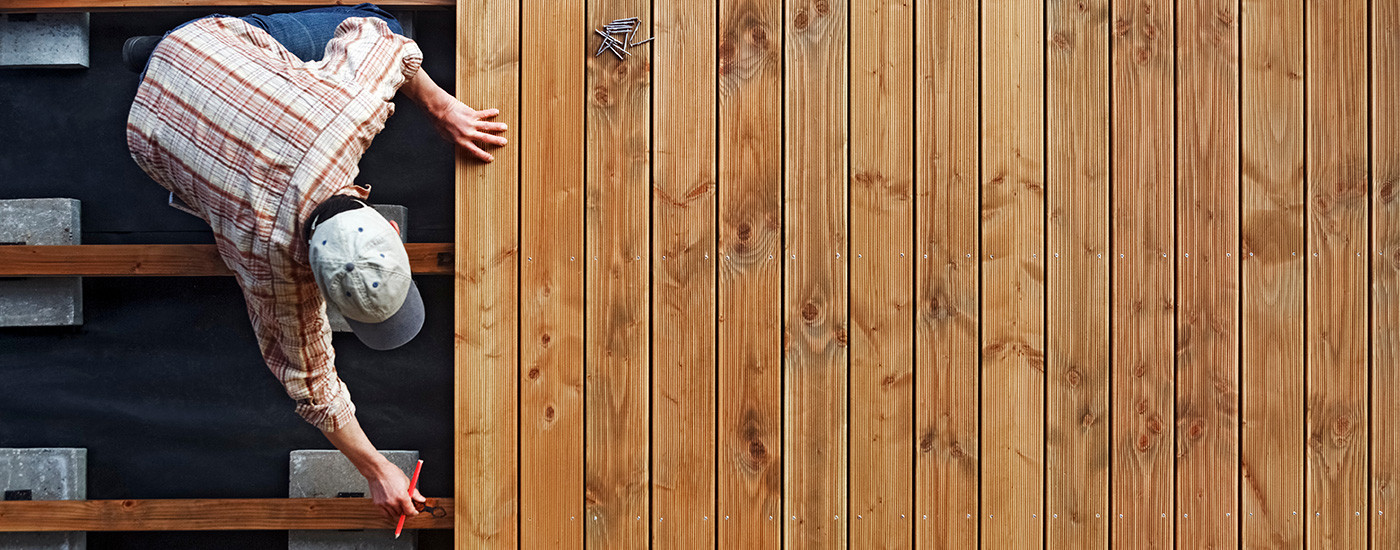Since we became obsessed with timber decking in the 1990s, thanks in part to the likes of Alan Titchmarsh and Charlie Dimmock, our love affair with those grooved timber boards has continued unabated. But have we been installing them incorrectly all this time? Back in 2021, Instagram influencer Stephanie from @my_london_home told us that if your grooves are on the top side of your decked area, your decking is upside down! So, was she right?
Why people think decking boards have ridges?
Any timber decking board features one smooth side and one ridged side. The ridges, also referred to as grooves and reeds, can usually be seen on the surface of decked areas, as people believe the ridges improve traction and therefore reduce the risk of slipping. There are some, also, who prefer the feel of the grooves underfoot, believing them to have therapeutic value, and there are those who simply prefer the look of the ridges.
Why decking boards really have ridges?
The reality of the ridges is that they do not improve traction, nor do they possess any magical properties to help your feet! Rather, they are a deliberate design feature to prolong the lifespan of the board, by encouraging the flow of air beneath the decking. Improved air circulation prevents the build-up of moisture which leads to mildew, rotting and ultimately decay.
The benefits of installing decking ridges up
- The aesthetic of the grooves uppermost is visually appealing.
- Decking fixings can be camouflaged or hidden in the grooves.
The disadvantages of installing decking ridges up
- The grooves do not offer superior grip.
- The grooves will hold water, snow and debris, which can cause damp, moist conditions, leading to rotting of the boards.
Ultimately, however, how you choose to install your decking comes down to personal preference. Whichever way you choose, it is important to maintain your decking correctly, and take steps to stop the decking being slippery.
How to clean and maintain timber decking
- Remove everything from the decked area e.g. furniture, planters etc.
- Sweep the entire area thoroughly with a stiff brush.
- Wash the decking using a hose on a gentle setting (stubborn stains can be tackled with a proprietary cleaner or a solution of 5 tablespoons of ammonia-free laundry detergent, mixed with 1 litre of bleach and 12 litres of water and then rinsed well).
- Clean decking can then be treated with Protek Wood Preserver, followed by Protek Restol Wood Oil or Protek Decking Stain. Read more about these products in How to protect timber decking.
Timber decking supplies from Witham Timber
At Witham Timber, we have been supplying quality timber products for over 40 years. All our wooden decking products are manufactured from pressure treated, graded timber, sourced sustainably. Whether you are looking for decking boards, decking panels or decking joists and newel posts, we supply everything you need to install new decking, as well as all the fixings you need. For lots of really useful articles on all aspects of timber decking, we also have a great decking section on our blog.
To answer all other enquiries, our sales team is available via email at sales@withamtimber.co.uk or over the phone on 01205 359188.

